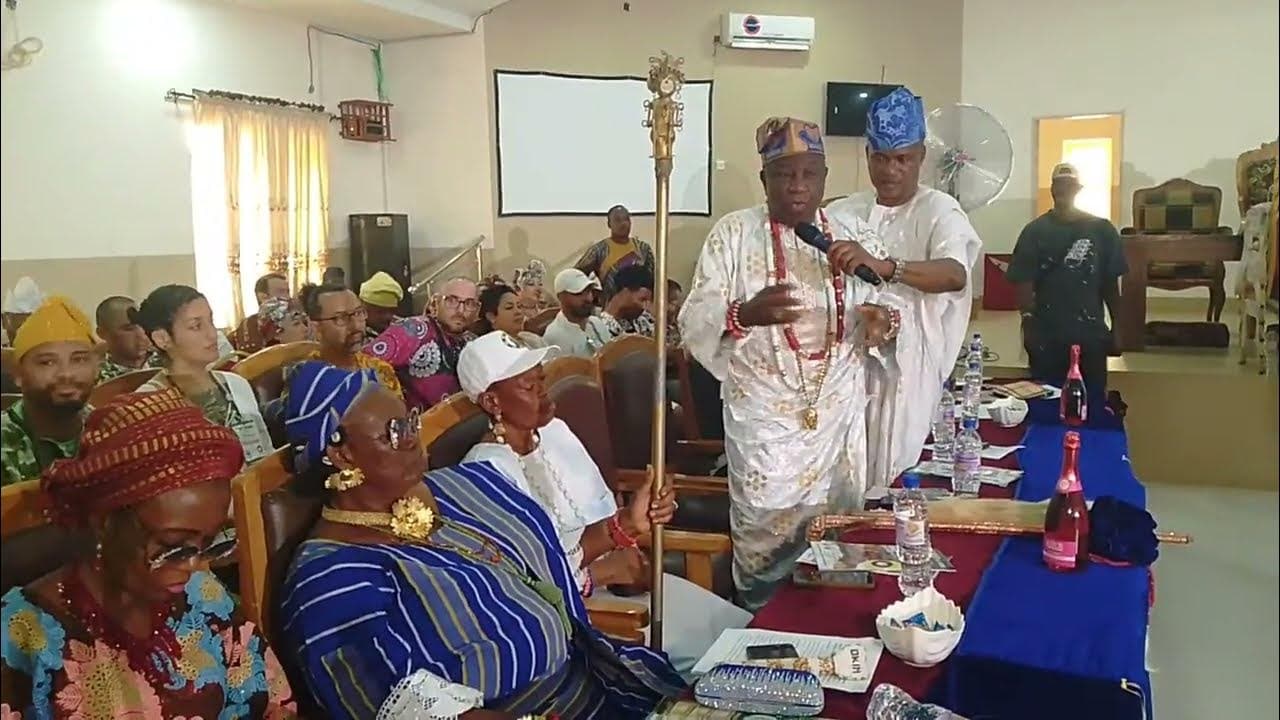Title: Trends in Nollywood: A Study of Selected Genres
Author: Barclays Foubiri Ayakoroma
Publishers: Kraft Books Ltd
Year of Publication: 2014
Pages: 365
Reviewer: ABC Toni Duruaku
INTRODUCTION
To bottle the expression of a phenomenon which the Nigerian film industry, Nollywood, has become, into the pages of one book, cannot be an easy task. Metaphorically speaking, “the elephant cannot be caged in a house.” To do that, the house must become a castle, for big projects demand big minds, big ambitions, big dreams, as well as prodigious energy and courage. The task of working on an art movement, such as, Nollywood, and squeeze it into a book therefore must be labelled a major feat, not only in the sheer enormity of the task, but also its demanding ramifications. This is especially more real as the literature on the Nigerian film experience is thin and often are snippets at the rapidly evolving art. Yet, Nollywood is nearly 25 years old.
Ayakoroma has however weathered the odds and dipped into his extensive resource to put together, a book that would capture the interest of the public, respond to the yearnings of students, slake the hunger of dilettantes, relieve the desire of aficionados, and actualize the wish of performance historians. He has written a well-researched document, which demonstrates that where there is a will and a way, there is a worthy product. This nearly 400-page book, Trends in Nollywood, is a compendium that would offer more than a passing interest to all.
Many have watched with amusement, the toddling steps of the video drama movement from the “Living in Bondage” days until today. They have noted the twists and turns, the controversies, the slips and the hiccups, the groans and the pains of labouring efforts. It is instructive that, the enterprise has resulted from self-help, creativity, courage, and the adventurous spirit of creative people, who saw a gap in the Nigerian visual entertainment industry, then typified in the evaporating cinema entertainment. In the beginning, corporate bodies and Government watched in amusement. Then the beginnings transformed to maturation. Still, pessimists grinned, scholars sneered, and businessmen wondered. But today, everyone wants to join the bandwagon – societies, religious groups, NGOs, government agencies, the media and more.
THE LAYOUT
Ayakoroma has painstakingly produced in a well-organized five-section format, the genres that make Nollywood the phenomenon it has become. In “Background of Nollywood – The Contemporary Nigerian Film Industry”, the author traces the very beginning of cinema in Nigeria to its collapse that was occasioned by urban crime, overdependence on western models, poor infrastructure, poor financing for distribution, rise of television soap and home entertainment, as well as a depressed economy. Home entertainment had become compelling and led to the recording of stage and location dramas. This 52-page section identifies the glorious years of the cinema industry in Nigeria and the drivers of the business, its collapse, the growth of television drama, the soaps, and the fruits of the efforts of that time. The section indexes the decline of the soap, the development of Nollywood, censorship, as well as marketing and piracy issues. Clearly, this section is a historical overview of the electronic visual entertainment experience in Nigeria.
Part 2 is labelled, “Studies in Genres in Nollywood.” This 28-page section identifies and explains fourteen generic composition and “faces” of the Nollywood enterprise, to wit:
- Igbo language genre film, which dwelt largely on “rituals, occult practice, voodoo, witchcraft and other such vices…” This later metamorphosed from subtitled vernacular drama into English language productions.
- Epic
- The prostitution and ghetto life genre examines the lives of young girls, who, “due to the love of money, resort to selling their bodies to make a living.”
- The traditional belief genre “projects the … norms and mores of traditional societies” including ancestral belief system, commercial life, land ownership, marriage, burial traditions, widowhood practices, etc.
- Family situation drama genres examines “peculiar marital and family relationships from the contemporary perspective.”
- Love and romance genre centres on love, sex, romance.
- Crime/gangster genre portrays the failure of the “policing system in Nigeria …that encouraged the rise of “vigilante groups and private security organizations…”
- The thriller genre films are “serious dramatic presentations that portray realistic character, setting, and real life situation …(with) intense character development and interaction…”
- Christian genre films “preach the word of God to win souls…”
- Gender film genre addresses gender-related issues like circumcision, the girl child, gender equality, widowhood practices, women empowerment, etc.
- Comedy genre films are light-hearted, and are “designed to amuse and provoke laughter.”
- The Adventure film genre exhibits “high energy, physical stunts and chases frights, escapes…”
- The political film genre dwells on the political class issues.
- Horror films genre which demands “immense technical requirements… frighten and…. invoke our hidden fears…”
This section also comments on key features and consequences of the growing film industry in Nigeria typified in Nollywood, which has promoted many Igbo stars, projected artists, encouraged the sequel syndrome, allowed over involvement in productions, and the making of iconography (or stock design elements). The industry has also evolved echoing storylines and titling. Ayakoroma also footnotes the portrayal of women as sex symbols, the forming of guilds, rising artistes remuneration, censorship, marketing, piracy, rise of professional film directors, poor institutional support and co-production activities. The consequence of these and more is the institution of a reward and recognition system: the film awards.
In all of these evolutionary categories, Ayakoroma does not mention Film Criticism. It is therefore more significant that Ayakoroma has chosen to fill this gap. Critiquing helps to grow a sector as it points out high points and low points that should engender improvement. Part Three, Four, and Five are analytical discussions of specific films in three broad areas, which basis for choice the author does not explain.
Part 3 uses “Igodo” and “Egg of life” to explore the Epic/historical film genre, while the “Issakaba” series is archetypical of the Vigilante genre in Part 4. The Fifth part analyses the representatives of the political genre – “The Senator” and “Master stroke.” Again to his credit, the author, in each of these three parts, identifies the social circumstances that influenced them, and sees the film tradition as a response to the need of the time. For instance, the vigilante films are the response to the twin issues of rising crime and poor security infrastructure, which created the vigilante system. The film, the author states, also shows the strengths and weaknesses of the vigilante system, which has today emboldened the call for regional police. This foregrounds the critique of the film under the genre. Ayakoroma uses the dramatic composition elements of plot, character and theme to discuss the films, bringing out the strong and weak points. He also discusses the performance elements of design, directing, and acting to discuss the films.
COMMENTS
It is instructive that, with scholarship in mind, Ayakoroma has dug deep to analyse the film in the chosen genre and on two occasions does a comparative analysis of films of the same genre. This way, he expands the production scope analysis, removing it from the one-size-fits-all narrow corridor to an understandably varied nature of the genre. The study of “The Senator” and “Masterstroke” from the same genre demonstrates this. In each of these three parts, he makes personal remarks that set the perspectives he had presented on a path that invites further discussion. This is the modus of good scholarship and the stuff courageous, fair-minded viewpoints are made of.
The summary, which concludes this seminal work, encourages more research in the generic development of the Nigerian film industry. Ayakoroma notes the impediments for the growth of the industry and calls for support by all and sundry to make Nollywood advance to the next level both as a revenue earner for the artist, and as a provider of thousands of jobs. The book ends with an extensive bibliography and index.
Trends in Nollywood: A Study of Selected Genres is an engaging book for a number of reasons: it reads well, it is clearly arranged, it demands attention; it is thought-provoking, it if forward looking; it is relevant to all sectors-students, scholars, practitioners, government, and the general public. The book style is elegant, attractive and pictorial. It is also smartly finished and in excellent typography. The preliminary discourses and blurb comments are by relevant, knowledgeable professionals. Yet, the book has Ayakoroma’s personal style – conversational, relaxed and factual.
It is my view, however, that social commitment prevented the author from ignoring the temptation of intrusive commentaries on the Nigerian condition. This digression, passion-driven and well-intentioned as it may be, invites controversy that could blight sections of the book. Although authors ought not shy away from a little debate, as it can make for good marketing, but a serious-minded book of this nature could do without authorial commentary that is outside the province of the art criticism.
Again, the extensive exploration of genres could have been more fully developed. They are identified but only three are actually discussed – the Epic, Vigilante/Policing, and Politics. The choice of close attention to these genres is difficult to appreciate beyond the hint that Ayakoroma was trying to keep the volume of the book handy or perhaps encourage further investigation of the other genres.
This book could very well have been organized in slim volumes that students can easily afford. A mainline book as this is worthy, prestigious, and confers evident scholarship. But in these days of squint existence and education costs, one is hard put to find undergraduates, who can afford a mainline textbook in spite of interest, without donor intervention. In fact, this is a book, Tertiary Education Trust (TETFund), for instance, should invest in and donate to students of theatre, drama, and film. The film industry should also take notice. A work like this stimulates further work and the corpus will advance the industry. What position Nollywood occupies today is built on the sheer number of productions, not on fiscal returns or quality. We want to be first in quality, first in fiscal returns on investment,
first in employment rating, and first in the numbers. Again, Ayakoroma’s work essentially recommends an increase of the discipline windows in our schools. Well-funded and equipped academic departments in film studies will translate theories into a robust, disciplined industry that drives for exercise. Nigeria will get there but there must be the will to do so. It takes courage, focus, proper positioning of manpower, fair adoption of research findings, and dedicated regulations to actualize this dream.
CLOSURE
Barclays Ayakoroma is one of the first to fire a shot in this manner. It is only a bite at the yam and the barn is large. Other scholars and practitioners should join the ‘debate’, the result of which government and institutional structures must tap into for us to move to the natural next level.
Barclays Foubiri Ayakoroma’s effort in Trends in Nollywood is dynamic, bold, thought-provoking, and engaging. The book is honest, informative, authoritative, and has drawn resource from respectable publications and individuals. With a PhD in Film, a strong theatre base, extensive teaching experience, and loads of professional exposure, it is little wonder that Ayakoroma’s logical mind, disciplined disposition and attention to details have been brought to bear in the writing and production of this book. It is excellent work, and I strongly recommend it to academics, students, professionals, and the general public.
Reviewed by
ABC Toni Duruaku
Associate Professor of Theatre & Drama

